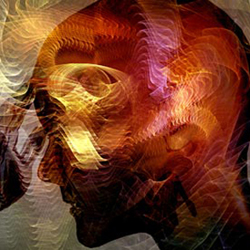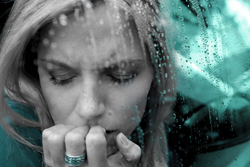JoannaMoncrieff.com – May 1, 2014
By Dr. Joanna Moncrieff, Psychiatrist
A long overdue debate is raging about the chemical imbalance theory of depression. Having been deluged with this idea for two decades now, the general public has come to believe that it is a scientifically proven fact. An LBC radio presenter recently announced that he had suffered from depression and he knew it was a chemical imbalance. ‘All the goodness is flushed out of the brain [and you have to] top it up now and again; that’s why you need medicine,’ is how he expressed it.
Pharmaceutical industry propaganda has led the way in advocating this view, but the medical profession continues to endorse it too. On 18th March 2014, viewers of This Morning, a national UK television programme were advised by the programme’s resident General Practitioner, Dr Chris Steele, that depression consists of a chemical imbalance in the brain caused by depletion of serotonin (1).
Neither is it simply a few rogue individuals who are promoting this line, as claimed by leading US psychiatrist Ronald Pies in a recent article (2). The American Psychiatric Association’s public information on depression, entitled Lets Talk Facts about Depression, claims that ‘abnormalities in two chemicals in the brain, serotonin and norepinephrine, might contribute to symptoms of depression’ and later on that ‘antidepressants may be prescribed to correct imbalances in the levels of chemicals in the brain’ (3).
The UK’s Royal College of Psychiatrists public information leaflet on antidepressants states: ‘we don’t know for certain, but we think that antidepressants work by increasing the activity of certain chemicals in our brains called neurotransmitters. They pass signals from one brain cell to another. The chemicals most involved in depression are thought to be serotonin and noradrenalin’ (4).
As Pies demonstrates, however, leading psychiatrists have been trying to distance themselves from the chemical imbalance theory of depression in the last few years, because the evidence to support it has simply never been there.
So what is the evidence? Two brain chemicals have been suggested to be involved in depression- noradrenaline (norepinephrine) and serotonin. The evidence on noradrenaline has long been acknowledged to be contradictory, as described in the principle American textbook of psychiatry in 2001, with studies showing increased, decreased and equal levels of activity in depressed patients compared to controls (5).
Evidence on serotonin comes principally from studies of serotonin receptors and ‘serotonin depletion’ studies. Results of studies of the serotonin 1A receptors in living subjects are contradictory, with some finding lowered levels of receptors in people with depression compared to those without (6,7), some finding no difference (8,9) and some finding raised levels (9,10)! Post mortem studies of receptors in the brains of people who have died by suicide are similarly inconsistent (11,12,13).
There are two types of ‘serotonin depletion’ study. One involves giving people a diet low in tryptophan, the amino acid that the body uses to manufacture serotonin. Some of these studies show a lowering of mood in people who have previously had depression and been treated with SSRIs. The effect does not occur in volunteers (14), however, suggesting that, if anything, it is a consequence of previous drug treatment. The second type of study involves a powerful serotonin depleting chemical called parachlorophenylalanine, which was used in animal and human experiments in the 1960s and 70s. This produced a state of insomnia, aggression, hypersexual behaviour, irritability, hypersensitivity to the environment, agitation and paranoia, but nothing resembling depression (Mendels and Frazer 1974).
Pies claims that psychiatric theories of depression are more sophisticated and incorporate social and psychological influences. But for all his talk about the ‘biopsychosocial’ model, Pies, along with most of the psychiatric establishment, cannot relinquish the disease model of depression – the idea that depression consists of the manifestations of a discrete biological mechanism (or mechanisms) like a bodily disease.
 Of course, there are brain events and biochemical reactions occurring when someone feels depressed, as there are all the time, but no research has ever established that a particular brain state causes, or even correlates with, depression. Alongside biochemical theories numerous findings have been trumpeted as indicating the disease-basis of depression, including variations in cortisol (stress hormone), brain volume abnormalities and neurotrophic factor. In all cases studies yield inconsistent results, and none have been shown to be specific to depression, let alone causal (17).
Of course, there are brain events and biochemical reactions occurring when someone feels depressed, as there are all the time, but no research has ever established that a particular brain state causes, or even correlates with, depression. Alongside biochemical theories numerous findings have been trumpeted as indicating the disease-basis of depression, including variations in cortisol (stress hormone), brain volume abnormalities and neurotrophic factor. In all cases studies yield inconsistent results, and none have been shown to be specific to depression, let alone causal (17).
The fact that more than 50 years of intense research efforts have failed to identify depression in the brain may indicate that we simply lack the right technology, or it may suggest we have been barking up the wrong tree!
Social constructivist thinkers have highlighted that emotions are not equivalent to physical states or sensations like being hungry, tired or having a cold (18). They are not simply involuntary experiences thrust upon us by our biology. They are sophisticated and specifically human responses to the world around us that involve complex moral evaluations of events.
This is not to deny that some individuals suffer more than others, and that some need assistance to climb out of the dark place they have become stuck in. The disease-model, however, is ultimately not helpful, as well as being unfounded. For all its attempts to incorporate social factors, the disease-model renders depression meaningless, because biology effectively trumps other influences. It conveys the message that we are powerless to change ourselves or our situations. When things go wrong, it persuades us we need a pill to put them right. This approach may appeal to some people, and I am in no way disparaging those who chose to follow it. But it is important that everyone knows how little evidence there is to support it.
References:
1) https://www.madinamerica.com/2014/04/open-letter-re-morning-feature-depression/.
2) http://www.mentalhealthexcellence.org/nuances-narratives-chemical-imbalance-debate-psychiatry/
3) http://www.psychiatry.org/mental-health/lets-talk-facts-brochures
4) http://www.rcpsych.ac.uk/healthadvice/treatmentswellbeing/antidepressants.aspx
5) Dubovsky SL, Davies R, Dubovsky AN. Mood Disorders. In: Hales RE, Yudofsky SC, editors. Textbook of Clinical Psychiatry.Washington: American Psychiatric Association; 2001.
6) Drevets WC, Frank E, Price JC, Kupfer DJ, Holt D, Greer PJ, et al. PET imaging of serotonin 1A receptor binding in depression. Biol Psychiatry 1999 Nov 15;46(10):1375-87.
7) Sargent PA, Kjaer KH, Bench CJ, Rabiner EA, Messa C, Meyer J, et al. Brain serotonin1A receptor binding measured by positron emission tomography with [11C]WAY-100635: effects of depression and antidepressant treatment. Arch Gen Psychiatry 2000 Feb;57(2):174-80.
8) Meyer JH, Houle S, Sagrati S, Carella A, Hussey DF, Ginovart N, et al. Brain serotonin transporter binding potential measured with carbon 11-labeled DASB positron emission tomography: effects of major depressive episodes and severity of dysfunctional attitudes. Arch Gen Psychiatry 2004 Dec;61(12):1271-9.
9) Parsey RV, Oquendo MA, Ogden RT, Olvet DM, Simpson N, Huang YY, et al. Altered Serotonin 1A Binding in Major Depression: A [carbonyl-C-11]WAY100635 Positron Emission Tomography Study. Biol Psychiatry 2006 Jan 15;59(2):106-13.
10) Reivich M, Amsterdam JD, Brunswick DJ, Shiue CY. PET brain imaging with [11C](+)McN5652 shows increased serotonin transporter availability in major depression. J Affect Disord 2004 Oct 15;82(2):321-7.
11) Lowther S, De Paermentier F, Cheetham SC, Crompton MR, Katona CL, Horton RW. 5-HT1A receptor binding sites in post-mortem brain samples from depressed suicides and controls. J Affect Disord 1997 Feb;42(2-3):199-207.
12) Matsubara S, Arora RC, Meltzer HY. Serotonergic measures in suicide brain: 5-HT1A binding sites in frontal cortex of suicide victims. J Neural Transm Gen Sect 1991;85(3):181-94.
13) Stockmeier CA, Dilley GE, Shapiro LA, Overholser JC, Thompson PA, Meltzer HY. Serotonin receptors in suicide victims with major depression. Neuropsychopharmacology 1997 Feb;16(2):162-73.
14) Murphy FC, Smith KA, Cowen PJ, Robbins TW, Sahakian BJ. The effects of tryptophan depletion on cognitive and affective processing in healthy volunteers. Psychopharmacology (Berl) 2002 Aug;163(1):42-53
15) Delgado PL, Miller HL, Salomon RM, Licinio J, Krystal JH, Moreno FA, et al. Tryptophan-depletion challenge in depressed patients treated with desipramine or fluoxetine: implications for the role of serotonin in the mechanism of antidepressant action. Biol Psychiatry 1999 Jul 15;46(2):212-20.
16) Mendels J, Frazer A. Brain biogenic amine depletion and mood. Arch Gen Psychiatry 1974 Apr;30(4):447-51.
17) Moncrieff J, Rebuttal: depression is not a brain disease. Can J Psychiatry 2007;52: 100-101
18) Harré, R. An outline of the social constructionist viewpoint. In The Social Construction of Emotions, Ed R. Harré, Basil Blackwell: Oxford, 1986, 2-14



SHARE YOUR STORY/COMMENT